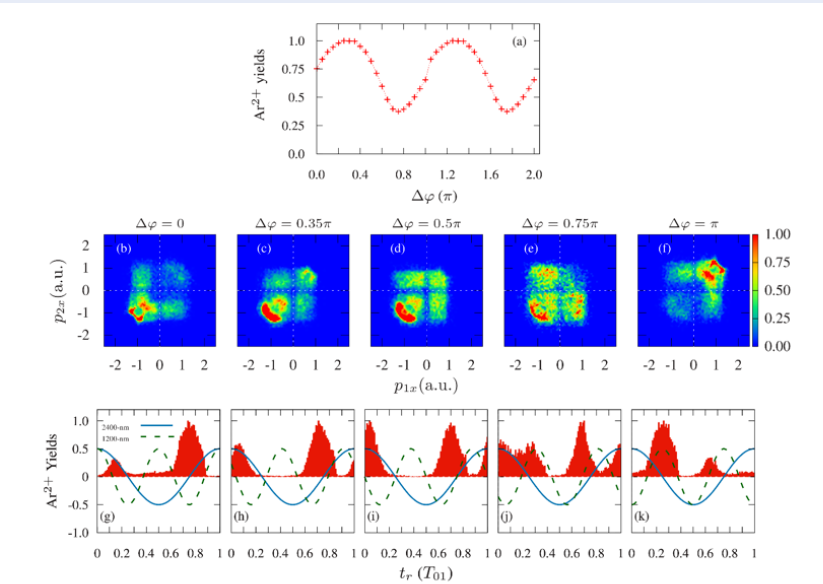
Controlling nonsequential double ionization mechanisms of argon atoms by parallel two-color laser pulses
- Department of Theoretical Physics, University of Science, Ho Chi Minh City 700000, Viet Nam
- Vietnam National University, Ho Chi Minh City 700000, Viet Nam
- Department of Physics, Ho Chi Minh City University of Education, Ho Chi Minh City, Viet Nam
- Office of Postgraduate Studies, Ho Chi Minh City University of Education, Ho Chi Minh City, Viet Nam
Abstract
Introduction: Recently, physicists have been interested in the nonsequential double ionization (NSDI) process since it provides information about the interaction between electrons in the atomic and molecular shells through the recollistion process. Technically, the development of near-infrared laser pulses has made them one of the most useful tools for studying the electron correlation effect in atoms and molecules. Furthermore, the parallel two-color (PTC) laser pulse is a useful instrument for controlling the process of recollision in a strong laser field. In this paper, with the aim of investigating the role of ionization mechanisms governing the NSDI of argon atoms, we use a PTC laser pulse with wavelengths of 2400 nm and 1200 nm to control the motion of two electrons. We investigate the contribution of ionization mechanisms as well as the correlation dynamics of two electrons upon the change in relative phase between the two component lasers from 0 to 2pi.
Method: The two-dimensional classical ensemble model is used to simulate the NSDI process, in which the motion of two electrons is governed by Newton's law.
Results: The correlated two-electron momentum distribution, recolliding time, and energy distribution after the returning electron's recolliding moment are extraordinarily sensitive to the relative phase of the two lasers. To modulate the ionization mechanisms, the relative phase between two lasers is tuned.
Conclusion: The results demonstrate that parallel two-color laser pulses are an effective method of controlling the correlated electron dynamics in nonsequential double ionization.

